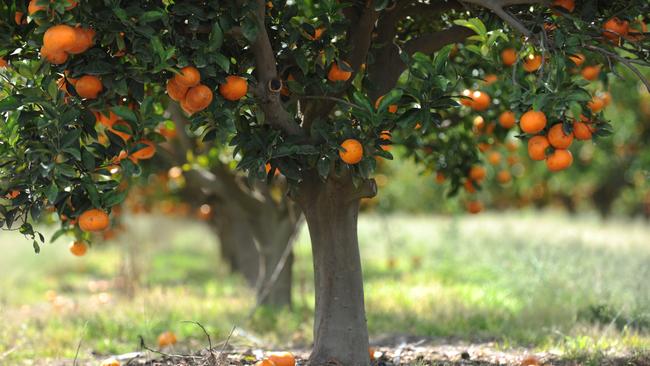Australia’s fresh produce boost despite Trump trade uncertainty
Amid a year of trade uncertainty and a war between supermarkets and farmers, Australia’s fruit and vegetable exports have hit a record.

Exports of Australian fruit and vegetables have surged as the horticulture sector uses free trade agreements and technology to open up new overseas markets for fresh produce.
Horticulture exports were worth almost $3bn in 2023-25, an 8.4 per cent increase on the previous year and a record year for the sector.
The increase was attributed to better growing conditions, expanded markets and technology that enables produce to be sent further and arrive fresher.
Brett Fifield, chief executive of research and development not-for-profit Hort Innovation, which will release the data on Thursday, said the industry was working to ensure it continued to grow its global reach amid an unstable trade environment.
“The industry is very well aware of the potential implications of playing in international markets,” he said.
“We’re very mindful that this is a changing environment and has been for many years.
“Our industry is paying a lot of attention to maintaining the relationships we’ve got and to make sure we continue to diversify.”
Despite the uncertainty around global trade, Australia has recorded strong growth into newer markets in South Korea, Canada, Singapore and the United Arab Emirates.
While almost 80 per cent of Australia’s fresh produce ends up in Asian markets, the share going into the Middle East has risen to 6 per cent, and 7 per cent in Europe.
China imports 28.1 per cent Australia’s exported produce, Hong Kong 6.5 per cent, Japan 5.8 per cent and Vietnam, Indonesia and India about 5.5 per cent.
“We are blessed with close proximity to markets with considerable size,” Mr Fifield said.
“We have a supply chain underpinned by stringent quality and safety and we have growers who are the world’s best at putting quality fruit and vegetables on a plate. When those things combine, Australia stands out as a powerhouse when it comes to horticulture internationally.
“These things don’t happen overnight; there have been a lot of growers with a lot of foresight to build it into what it is now.”
Mr Fifield said that while growers had reaped the benefits of the boost in sales, “Australian horticulture is facing historic highs when it comes to productions costs like labour, energy, capital and inputs like fertiliser.”
Victoria had most of the horticulture exports, with 47 per cent. South Australia was next (17 per cent), followed by Queensland, (15 per cent), NSW (11 per cent), Western Australia (7 per cent) and Tasmania (3 per cent).
Citrus was the highest exported fruit category overall, with the value of mandarin exports rising 27 per cent to $234.4m, and oranges up 17 per cent to $289.2m.
Carrots were the highest value vegetable export at $71.5m, followed by potatoes at $46.4m and onions at $45.7m.




To join the conversation, please log in. Don't have an account? Register
Join the conversation, you are commenting as Logout